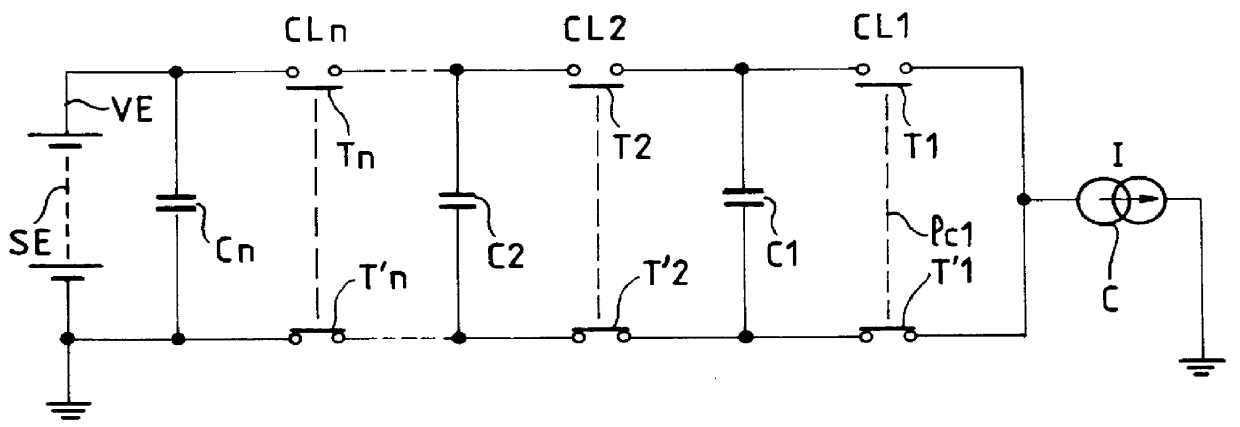Practical structure for making a multilevel converter
a converter and multi-level technology, applied in the direction of dc-ac conversion without reversal, process and machine control, instruments, etc., can solve the problem that the structure implementation does not meet expectations
- Summary
- Abstract
- Description
- Claims
- Application Information
AI Technical Summary
Benefits of technology
Problems solved by technology
Method used
Image
Examples
Embodiment Construction
No further reference is made to the electrical description of the multilevel converter shown in FIG. 1, except to mention that a conventional structural implementation of it would comprise identical units, each of which corresponds to one cell of the converter, and thus each of which contains two switches and one cell capacitor, e.g. the switches T2 and T'2 and the capacitor C2. The capacitor C1 would thus belong to a preceding cell. The connections between the upstream poles of the switches T2 and T'T and the downstream poles of the switches T1 and T'1 would thus be connections between modular units, which connections would be relatively long and therefore relatively inductive.
As explained below, the invention consists not only in limiting the inductive nature of the connections but also in making sure that, physically, a capacitive element is connected to the upstream poles of the switches of each cell, so that they are protected from the effects of the inductance of the conductor...
PUM
 Login to View More
Login to View More Abstract
Description
Claims
Application Information
 Login to View More
Login to View More - R&D
- Intellectual Property
- Life Sciences
- Materials
- Tech Scout
- Unparalleled Data Quality
- Higher Quality Content
- 60% Fewer Hallucinations
Browse by: Latest US Patents, China's latest patents, Technical Efficacy Thesaurus, Application Domain, Technology Topic, Popular Technical Reports.
© 2025 PatSnap. All rights reserved.Legal|Privacy policy|Modern Slavery Act Transparency Statement|Sitemap|About US| Contact US: help@patsnap.com



